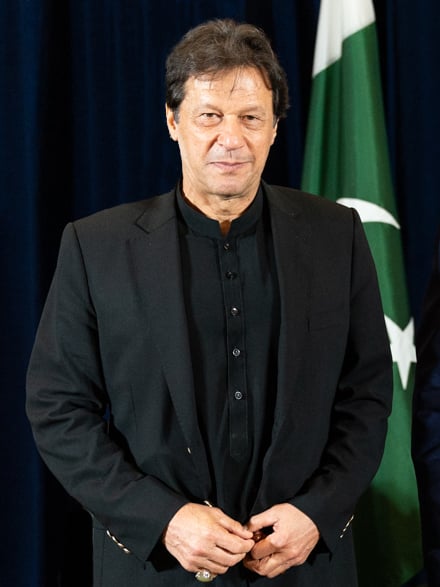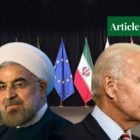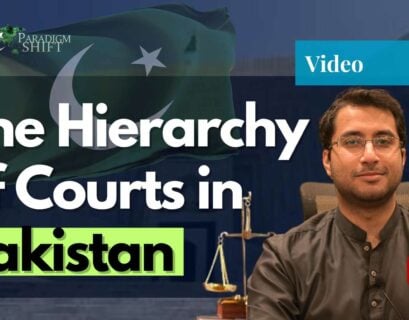Ms Zuha Tiwana is a psychologist, freelancer, and analyst. She can be reached at [email protected]
Introduction
Pakistan has not only experimented with different governance systems such as parliamentary and presidential but has also experienced its faire share of administrative reforms since 1947. The governance model in Pakistan is very comprehensive; many governing bodies are responsible for running the administrative machinery of the country. It is imperative for any government to run the system with the provided resources by taking the needs of the people into consideration and by promoting a democratic array of policies. Only an accountable, effective and empowered government can do that.
In Pakistan, the system of federal to local government is unique as a result of many reforms that have been made ever since the inception of the country. The bleak history of military regimes has impacted the state’s machinery; however, the introduction of local government bodies has been a very smart decision for the governance of districts, divisions and even provinces in Pakistan.
Organization of Federal Administration in Pakistan
The central secretariat under the federal government operates under different sets of ministries, divisions attached to departments, subordinate bodies, and autonomous and semi-autonomous bodies under a federal government. The functioning of each body is hierarchic with a ministry at the top level and semi-autonomous bodies functioning at the lowest levels.
a. Prime Minister

The top official in the federal government is the Prime Minister who is responsible for the transaction of business. No decision can be made without the consent of the Prime Minister. The PM is supported by the Federal Cabinet for the smooth running of the government.
b. Cabinet
The cabinet is for the support of the Prime Minister comprising of the federal ministers or the ministers of the state. The federal minister is a link between the legislature and administration. They are responsible for their departments and are accountable to the Prime Minister.
c. Secretary
The officials in charge of the divisions are the civil servants acting as administrative heads of their respective ministries in divisions. The secretaries are accountable to the federal ministers and they are to keep them updated about their departments. The officials submit reports to the PM in the form of summaries.
The policy formulation and implementation are important roles of the secretaries. The secretary, being the controller of many attached departments, subordinate bodies and autonomous and semi-autonomous bodies, is also responsible for the accounting details of his/her ministry or division. It is the sole responsibility of the secretary to report to the concerned cabinet member and prime minister in case of any material departures.
d. Additional Secretary
Under the authority of the Secretary, an additional secretary is the second in command for the respective ministry. They work under their secretaries with an utmost duty to control the lower hierarchy of the division. They can reach out to the ministers through the secretaries.
e. Joint Secretary
The third level in the administration of a ministry is the joint secretary who assists the additional secretary. In the division, he is the second in command to the additional secretary. The orders are circulated through the additional secretary, and the joint secretary is responsible for the whole wing.
f. Deputy Secretary
A Ministry is divided into divisions and a division is divided into different wings. Different wings classify into different sections and the chief of a group of sections is a deputy secretary. The deputy secretary controls and manages the ranks and files in his/her sections. The upward and downward communication is done through the office of the deputy secretary.
g. Section Officer
The head of each section is a section officer who controls the clerks, steno-typists, record managers and assistants of his/her section. The process of ranks and files are properly managed in each section by the respective section officer.
Organization of Provincial Administration in Pakistan
Under the constitutional system of Pakistan, certain powers have been given solely to the provinces. The departments of education, fisheries, health, sanitation, poultry, irrigation, local governments all operate under the provincial cabinets. All of the provinces in Pakistan have their own share of finances and powers. The provincial system is more or less like the central system of government.
a. Chief Minister
The Chief Minister (CM) is the head of a province. The Provincial Assembly elects the CM for five years. He/she is the head of the provincial cabinet and it is his/her duty to maintain law and order in the province. Also, major decisions and policies are approved only with the consent of the Chief Minister.
b. Chief Secretary
They are civil servants who are admitted after qualifying for the CSS exam through merit. The Chief Secretary is the head of the provincial Secretariat. There are many departments under the secretariat and according to Constitutional clause 139, the “Provincial Rules of the Business”, the Chief Secretary is responsible for communicating between all the departments and managing the key roles of each one.
c. Ministers and Secretaries
The ministers are the heads of a certain department with the secretaries assisting them. Each department in the province has its own minister and staff. The minister is accountable to the Chief Minister of the province, whereas the Secretary is answerable to the Minister in charge. To assist the Secretary, there are offices of Additional Secretaries, Joint Secretaries, Section Officers who help in the running of the provincial machinery.
Territorial Division of Provinces
Each province has been divided on the basis of territory into districts and further into tehsils and Unions with their own heads. The local governments control the respective areas under command and manage the civil machinery therein.
a. District Coordination Officer (DCO)
The DCOs control districts by maintaining peace and order, financial issues, developmental areas and coordination within the districts. Public representation is done through the District Council.
b. Tehsil Municipal Officer (TMO)
The TMO is accountable to the DCO and plays the role of a DCO in a tehsil. The tehsil councils are responsible for public contribution within tehsils.
c. Union Councillors
The UC of the Unions is the head of a small village or any rural population. The union councils are the hub of public communication in villages and small towns.
Organization of Local Government in Pakistan
The local governments of Pakistan were initiated in August 2001 by the then Chief Executive of Pakistan. Since then, the local government bodies have been active and the devolution of power has been clear among them.
a. Zila Nazim
The head of a district is Nazim who is responsible for all the systems in a district. The council elects a Nazim for a term of four years and the Nazim enjoys a majority in the council. The appointment is not merit-based but rather a political one as the members of the council elect the Nazim by way of voting.
The Nazim is accountable to the provincial head and controls almost all the activities within a district. Public health, physical planning, repair of roads, sewerage and drainage, education matters, transfers and postings of schoolteachers; all matters are seen by the Zila Nazim.
b. District Coordination Officers (DCO)
The DCO is under the command of the Nazim. The DCO can report to the higher authorities if the Nazim acts against law in any matter. The DCO is in charge of all departments/groups of offices of the district including revenue, finance and planning, health, education, literacy, information technology, agriculture & livestock, works & services, forests, community development, municipal services etc.
c. Executive District Officer (EDO)
An EDO is under the command of the DCO and manages different departments of a district. There are many EDOs in a district. Each EDO has his/her own responsibilities and duties according to the nature of the department they are in. A few departments are listed below:
- EDO Coordination. An EDO for District Coordination is in charge of coordination and human resource management within the district. The officer is accountable to the Zila Council for accounts of the department. The basic duty of an EDO coordination officer is to maintain a link between districts and their departments.
- EDO Agriculture. Water management, fisheries, agriculture, livestock, soil management and forests are seen by the EDO agriculture in a district. The developmental programs and budgetary allocations are the responsibilities of an EDO Agriculture who reports to the DCO.
- EDO Community Development. All the activities related to labour, sports, social welfare and culture are controlled by the EDO Community Development.
- EDO Education. Academic, sports and special education institutions are directly under the command of the EDO. They have the authority to inspect schools. The issues with the school teachers and staff are also handled by them.
- EDO Finance and Planning. The EDO for finance and planning is responsible for the budget planning, investments, development and planning within a district. All the treasury issues are reported to the EDO who has to manage the activities in the district.
- EDO Health. The health system of a district is under the command of EDO Health. Public health, district and tehsil headquarter hospitals and their management are maintained by the EDO. The issues related to urban and rural health are also controlled by the EDO.
- EDO Law. They are responsible for legal issues and the drafting of laws. The officer belongs to a legal profession, a lawyer who can understand the legal issues well and come up with the solutions to different issues in time.
- EDO Literacy. A specialized individual in literacy and education is appointed as EDO literacy. Their sole duty is to promote literacy in the district via campaigns and awareness programs.
- EDO Revenue. The officer is the controller of lands, revenue and excise and taxation issues within a district. The collection of taxes and records of revenue are under their set of responsibilities.
- EDO Executive Magistrate. Issues like law and order, price controls, and district management are seen by the executive magistrate.
d. District and Sessions Judge
The District and Sessions Judge is the highest authority in judicial administration in a district. The number of judges within a district depends on the workload of the area. They have duties related to judicial issues and the management of civil legal issues. They are appointed via Public Service Commission or through direct recruitment.
e. Superintendent of Police (SP)
The head of district police is the SP who is assisted by the DSPs and ASPs in the district for crime control and checks and balances in the district. He is independent of the DCO of the district. The SPs are appointed either by the FPSC Police Group of Pakistan through CSS exams or by the promotion from Deputy Superintendent (DSP).
Tehsils and Union Councils
The districts have further been divided into Tehsils and Union councils. The offices in tehsil and unions directly report to the district offices. They follow the instructions of the associated district administration in their respective domains.
Thus a complete local government in Pakistan starts from the union councils at the lowest level and the district administrations lead in every district. Assistant Commissioners and Deputy Commissioners are appointed by the Federal Public Service Commission (FPSC) in different areas to assist the District Commissioner in running the district administration smoothly.
Future Prospects
With the passage of time, many reforms and changes have been made at the provincial level, and each province has a different setup based on the different governments in each province. The central-provincial issues have made the machinery of the government a bit derailed but the competent civil administrators, bureaucrats and officials have used the devolution of power within the provinces for the benefit and development of their respective areas. More provincial harmony and national coherence will make the civil administration much stronger and more productive in the future.
If you want to submit your articles and/or research papers, please check the Submissions page.
The views and opinions expressed in this article/paper are the author’s own and do not necessarily reflect the editorial position of Paradigm Shift.



















